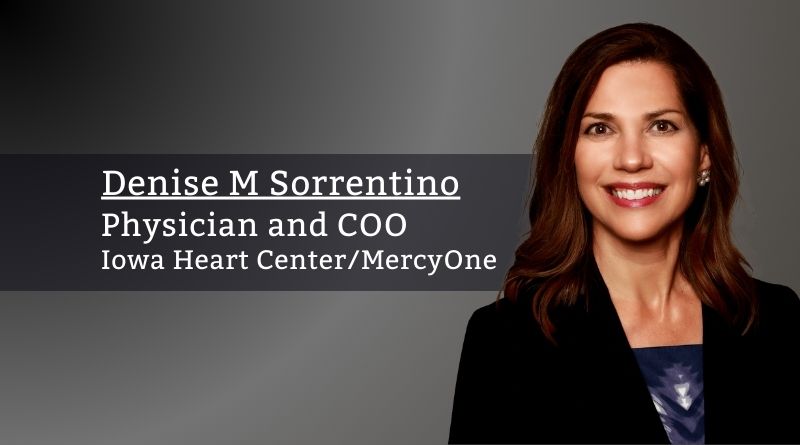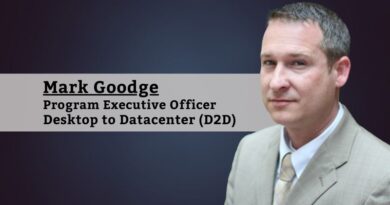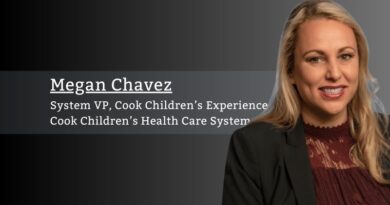An Opportunity for Greatness…The Patient Experience in the Digital Age
By Denise M Sorrentino, Physician and COO, Iowa Heart Center/MercyOne
Patient experience in a post-pandemic world is a daunting challenge, especially when healthcare systems and providers are dealing with provider shortages and a consumer-driven market. Operating in this environment requires patient experience to go beyond patient satisfaction scores. It requires intentionally attending to the full circle of needs of the patient and their family to provide clear, complete “patient-centered care.”
The shift to a consumer-driven market
For many years, healthcare followed a paternalistic model, where patients were raised to do what their physician told them to do —no explanation needed. I’m happy to say this care model is defunct and long gone. And this shift alone has elevated the patient’s experience.
However, the work is not done. Today, the patient has more access than ever to countless internet-based sources for medical data, diagnostics, prescription medication and more; giving them more decision-making power than they’ve ever had. With more decision-making power comes the choice to say no. We live in a culture driven by google reviews and ratings to choose restaurants, vacations and providers. Data shows patients are much more likely to choose a provider and hospital based on positive patient experience and word-of-mouth rather than marketing alone. So, providers and health systems need to continue to focus on the primary elements of excellent patient experience: The seamless integration of appropriate access, consultation and individualized follow-up for each and every patient and their family or advocate.
Patients are not looking for yet another pill, lab test or x-ray. They and their family seek comprehensive, high-rated healthcare with education, ease and great outcomes.
Elements of the elevated patient experience
Patients, their families and advocates seek and deserve an elevated experience for their medical diagnosis, treatment and care. Excellence in patient experience must also be holistic and requires the entire healthcare system to focus on the following:
- Ease of access
- Positive culture with a shared mission at all levels
- Communication via digital, audio and video
- Curated patient education resources
These elements of focus can be broken down into tangible tactics to help improve the patient’s experience – starting with education all the way to access to care.
Patient education
Patients often go to the internet as their first information source. So accessible and updated online resources are essential to patient education. This can include assets such as blogs, health risk assessments and treatment guides. Also important is having updated listings of providers and department offerings to help lead to informed decision-making. Not only do these educational assets help empower patients to take the next step of meeting with a provider, but an empowered patient is a happy patient.
Patient-focused scheduling and follow-up
Online scheduling is a must. The ease of booking an appointment online is highly valued by consumers, and easy scheduling starts them off on the right foot. If a phone call is necessary, phone services should be optimized to have wait times no longer than 90 seconds and a method for patients to leave call back numbers so they’re not left waiting on hold or wondering what to do next.
The portal should offer Q and A for patients and information, including pre- and post-procedure education. As physicians are overloaded with intense demands of electronic health record (EHR) data and “inbox” communication, I believe we should use the help of AI to generate more complete and educational responses for patients looking for more information.
Institutional empathy
From the parking valet attendant, front desk staff, and lab technician, we must focus on reward and train empathy. Health care delivery is challenging and demanding, and often employees at all levels, including physicians, become depleted. That one more visit over lunch (who gets lunch?) or end-of-day late patient does not always receive the mandatory, necessary empathy he or she deserves.
Access to care
Telehealth availability– Yes, yes and yes. We must continue to meet patients where they live. A follow-up visit from the warmth of their home kitchen, their desk at work or the minivan awaiting child carpool—it’s always a yes.
Utilizing technology is essential—yes to patient/customer service chatbots and yes to virtual care centers where a nurse/advanced practice provider or physician is always available to address immediate issues and concerns with empathy.
Hospital at home—another yes! When appropriate, we need to focus providers and healthcare systems to treat patients at the location where they are happiest and most comfortable. It’s amazing how much can be done with video monitors, IVs, oxygen tubing and around-the-clock physicians and nurses to provide virtual care for patients treated at home. These models exist but are not nearly as widespread as needed.
Sure, on the surface, these tactics aren’t groundbreaking by any means. However, when a health system fully integrates them into a patient’s care journey, their positive experience skyrockets. And the time to do this is now.
Patients are not looking for yet another pill, lab test or x-ray. They and their family seek comprehensive, high-rated healthcare with education, ease and great outcomes. They’re seeking the total package of excellent patient experience from their first touch and extending throughout their lifetime of healthcare needs and loyalties. Patient-centered care—the holy grail of health care.



